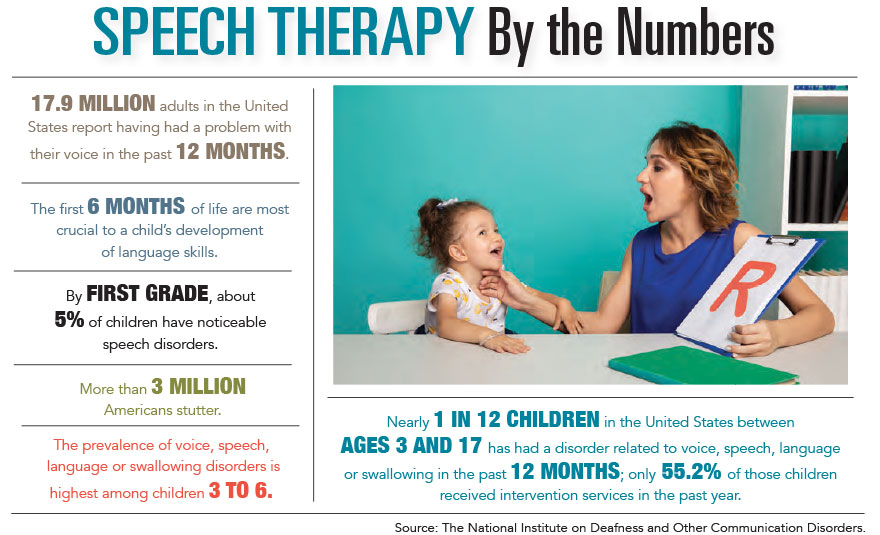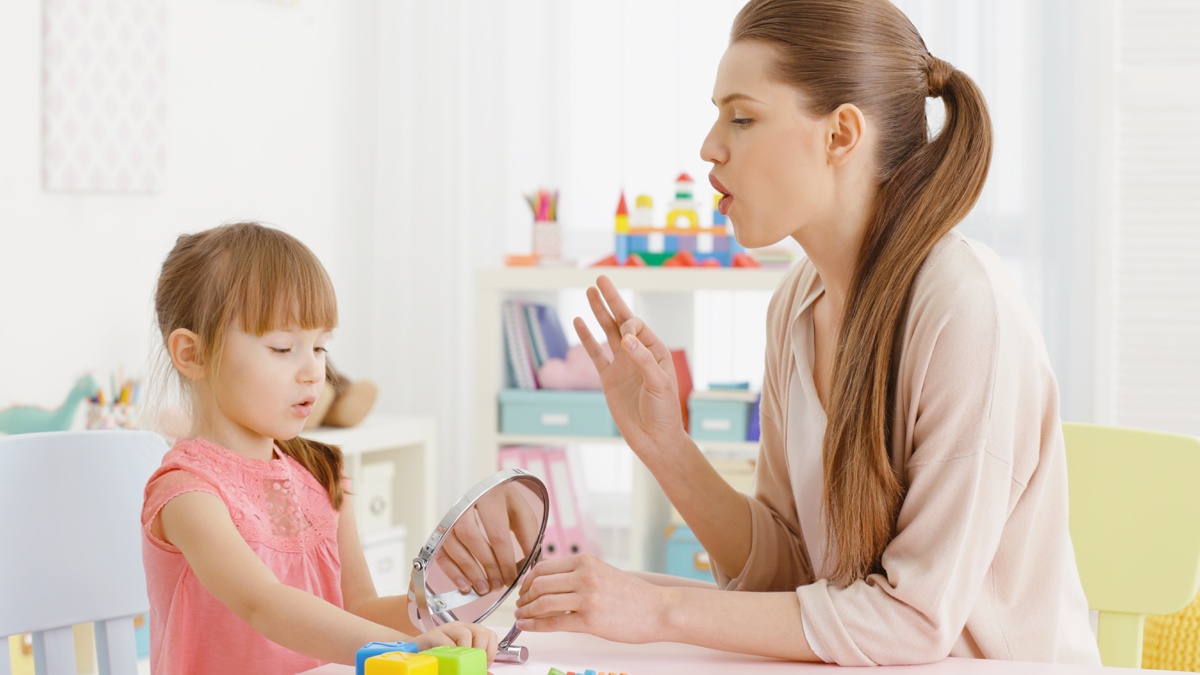The ability to vocalize or clearly convey a person’s needs, thoughts and feelings is important for good physical, mental and emotional health. Speech therapists specialize in working with patients to bridge the communication gap and improve lives and practice anywhere from schools to private practices, outpatient and inpatient hospitals and skilled nursing facilities.
Speech therapists work with a wide range of patients from birth to end-of-life. Whether it’s a tongue-tied infant, a baby with a feeding trouble, a person with developmental or special needs, or a stroke patient who has neurological damage, trouble swallowing or risk of aspiration, the speech therapy umbrella encompasses these issues. Often, physiological issues such as weak musculature of the jaw, sometimes in combination with behavioral issues like learning to chew and swallow, can be addressed with speech therapy.
Oral impairments, oral-motor difficulties and even hearing problems can lead to speech delays, and early treatment can yield positive progress.
“Often, speech therapists are one of the first stops when a parent is questioning, ‘Is there something wrong with my child?’” said Staci Price, a speech language therapist with Therapy360 in Greenville. “It’s a good first stop; we love to start seeing little ones early – around 2 years old instead of around 4 years old. Sometimes in that 18- to 24-month age range, parents need to know if their children are close to milestones, and we can work with them so they can then provide help in their own environment.”
Milestones to look for, she elaborated, include first words around 12 months of age, and building up to put words together, like, “Daddy go,” or, “My cup” by about 2 years old. For toddlers and school-aged children, recurring grammatical issues such as using “Her rides the bike” instead of “She rides the bike” or speech sounds that are omitted or distorted are common issues.
The pediatric level of speech therapy focuses on two general categories: expressive language, like the ability to speak or pronounce words, and receptive language, which is the ability to comprehend spoken language, like following directions.
“A lot of times, receptive language capabilities are similar to expressive language capabilities – a child with low cognition will have low expressive language skills. But if a child has low expressive language and has good receptive language, we can teach the expressive language so they can independently function throughout their lives,” explained Guy Vinette, owner of Vantage Speech & Language in Summerville. “We’re creating opportunities for kids to learn verbs – a child might know nouns like ‘apple,’ ‘ball’ or ‘toy,’ but we want to know more about that apple – do you want to eat it? Do you like the color? Other times, kids will make sounds and point or grab your hand and bring you to an item but don’t know what it is. When kids can convey their own thoughts and ideas, the caregiver can help them without playing psychic.”
Vinette uses augmentative and alternative communication to teach functional language and sentence structure to clients who don’t have strong expressive language. AAC gives them alternative ways to ask questions, protest and express their ideas, needs and wants.
“Culturally, everybody has a voice, but not everyone is able to articulate and produce speech the same way. With the use of a speech generating device – a form of AAC – we use pictures and speech output to represent language at the same time,” he said.
The device, which looks similar to a tablet, uses pictures that are voiced when pressed.
“We don’t have to worry about a communication barrier with this – they can communicate to learn,” Vinette said.
He and Price both emphasized the importance of teaching family members and caregivers ways they can help and improve communication at home. Vinette suggested training the whole family.
“It can be frustrating for everyone when it is unclear what a person is trying to communicate. When speech is improved to communicate clearly, there is a quality of life that improves for everyone,” Price said.
“Ultimately, everybody has a voice. Having a voice is just a tool. It’s how we utilize it with language to communicate, by learning expressive or receptive language, with the AAC, with pointing, gestures, facial expression – anything necessary to communicate,” Vinette concluded. “Every voice, every communication and every modality matters.”
By Anne Shuler Toole


